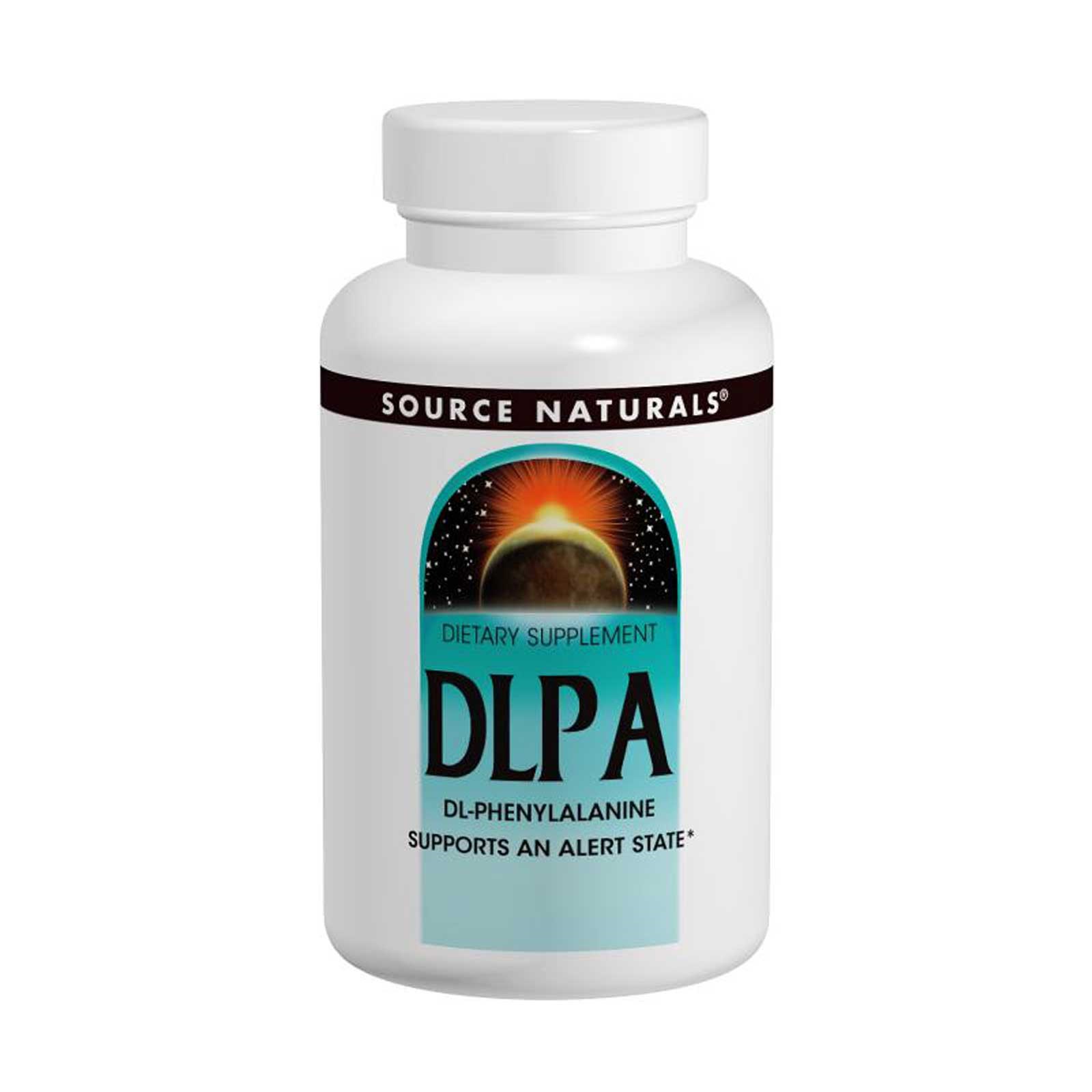Today I want to talk to you about one of the best amino acids that has really helped me manage feelings of depression, anxiety and trauma.
I write about many different helpful nutrients and supplements, and I know it can be overwhelming.
So I want to dedicate this post to one amino acid, because I feel like it’s helped me more than any other.
As soon as I realize I'm running low and have just a few capsules left, I order it immediately because it gives me so many benefits.
Even though I can live without it, I’d rather not.
Taking it every so often helps my mood and significantly improves the quality of my life.
A subtle sense of “impending doom” starts to creep in when I’ve gone too long without it.
If you struggle with chronic anxiety and depression, you probably know what I’m talking about.
This feeling used to be a lot worse for me.
It felt like a dark cloud was following me around all day, and I just couldn’t shake it.
It’s now gone.
And thankfully, I know exactly how to keep it away.
But life can be tough at times, and things happen.
And that’s why I’m glad I have access to DL-Phenylalanine (DLPA) whenever I need it.
It helps me get through stressful times.
It can get me out of a deep hole like nothing else.
And if you struggle with feelings of trauma, anxiety and depression on a regular basis, it may help you too.
What is DL-Phenylalanine (DLPA) and How Does It Work?
I first learned about phenylalanine in the book The Mood Cure by Julia Ross.
It’s an essential amino acid that plays a key role in the proper functioning of your nervous system.
If you're deficient in phenylalanine, you can have the following symptoms:
Fatigue
Confusion
Memory problems
Decreased alertness
Loss of appetite
DL-Phenylalanine, or DLPA for short, is a combination of two different forms of phenylalanine – D-Phenylalanine and L- Phenylalanine.
The D and L forms of phenylalanine have different beneficial effects on your body and brain.
L-Phenylalanine is used as a building block by your body to create a number of important proteins, hormones and neurotransmitters.
This includes dopamine, norepinephrine and thyroid hormone – all of which are necessary for optimal brain and mental function.
Dopamine in particular is very important as it’s the main neurotransmitter that supports your attention and motivation, and plays a key role in the “reward system” of your brain.
D-Phenylalanine, on the other hand, inhibits the breakdown of endorphins.
Endorphins are pain-relieving compounds that originate within your body.
Your brain produces and releases these natural painkillers during times of strenuous exercise, emotional stress and pain.
But D-Phenylalanine has been shown to slow the action of enzymes that destroy these morphine-like substances. By doing this, it can prolong the activity of your endorphins within your nervous system, allowing you feel better for longer (1-6).
How It Can Help You
Together, D and L-Phenylalanine can support your brain and mental health by increasing both dopamine and endorphins levels.
My research and personal experience suggest it can help treat a number of different conditions, including:
Depression
Anxiety disorders
Chronic pain conditions, such as fibromyalgia and arthritis
Chronic fatigue syndrome
Bipolar disorder
Premenstrual syndrome (PMS)
Attention deficit-hyperactivity disorder (ADHD)
Drug withdrawal, including alcohol, opiates and psychiatric medication (antidepressants, benzodiazepines, antipsychotics).
Personally, it helped me the most with depression and anxiety, and there are several studies that show it can improve your mood.
In one study, 20 depressed patients took 200 mg of DLPA everyday. At the end of the 3-week study, 12 patients no longer had depression, and 4 patients experienced mild to moderate improvements in their mood (8).
This makes sense considering that researchers have found that people struggling with depression often have low levels of phenylalanine, and supplementation significantly elevates their mood (9).
In fact, one study found that DLPA is just as effective as standard antidepressants (but without side effects), and another found that people who don’t respond to common antidepressants often get significantly better when they take DLPA (10, 11).
And even if you take medication, research shows that combining DLPA with antidepressants leads to greater increases in mood than simply taking an antidepressant alone (12).
Yet unlike antidepressants, you can feel the effects of DLPA quickly (within a few hours) and in some cases, it can “terminate depression within 2 to 3 days” (13).
My Experience
By building up your natural endorphin production, DLPA doesn’t just help reduce physical pain – but mental pain as well.
When I first started taking DLPA, it was such a relief. I was so glad I had found it.
I notice it makes me:
More comfortable, happy and satisfied with my life;
More relaxed and calmer every time I take it;
Less moody and irritable;
Less likely to take things so seriously; and
Less reactive to negative events and situations.
Overall, it lifts my mood and reduces emotional sensitivity. Life becomes less intense. I’m not as sensitive to the world around me. I would definitely recommend it to others who also have “sensory processing sensitivity”.
And eventually, DLPA helped me successfully wean off multiple psychiatric medications. Along with some other supplements, it played a critical role in making the withdrawal process as smooth as possible.
I used to take 500 mg every day. Currently, I only need 500 mg once or twice each week, mainly because neurofeedback and EMDR have helped me so much.
Other Success Stories
I understand that you might be thinking that perhaps DLPA won’t help you like it helped me.
And I can't guarantee that it will.
But I did some digging and found a number of other people online who say that DLPA has also helped them manage or overcome their mental health issues.
I’ve gathered their comments below and bolded anything that I can personally relate to or I have experienced while taking it:
“Suffering from severe post-traumatic stress, I've tried any number of natural products as the chemical cocktails handed out by conventional medicine are simply not acceptable to me. After my first dose of 1000mg DLPA, my depression lifted and trauma reactions (flashbacks and hyperviligence) significantly reduced. I've been taking this for a couple months now and there is definitely a light at the end of the tunnel. It has almost completely reversed my suicidal tendencies which were increasing regularly; they are now practically nonexistent. This product has truly saved my life.”
“My brain finally feels at rest and the anxiety has greatly decreased, and I can get on with my life. DLPA is my lifesaver. I will be taking this for as long as I need to.”
“DLPA has been a huge help to me. I have type 1 bipolar and this has helped me more than anything I have ever tried. I will buy more and I also take more than 1. I take 2 to 3 a day and it calms my mind like nothing else ever has.”
“My husband is mildly bipolar. We've decided to try to treat him naturally and phenylalanine is one of the treatments. He only takes this on an "as needed" basis, which turns out to be at least two days per week. He has other regular supplements he takes daily. This is only for "extra support" on bad days. And it really works.”
“DLPA is a key factor in improving my anxiety, depression and ADHD more than any of the several medications I have taken over the last 10 years.”
“I take DLPA first thing in the morning and it literally helps me get out of bed, get focused and get the day going with a positive attitude.”
“I honestly felt a difference right away. I was suddenly happy and smiling non-stop. I truly had a sparkle in my eye and I felt talkative and social. After a few hours the feeling wore off but I still felt an inner sense of content. It has helped with feelings of anxiety as well which is a plus.”
“Wow, what a difference! I have been so relieved from all those false moods that I can honestly say I am happy, alive and free.”
“I use this daily for the treatment of mild depression. I do notice a difference while on it. I went off of it briefly and felt as if someone had let some air out of my balloon, just kind of deflated.”
“I have suffered with extreme depression and anxiety since I was 13 (I’m now 42). I have gone through many different prescription/herbal/clinical therapies, and this product has been life-changing in a very short time. This has given me energy and focus I never had, a zest for life, an ability to handle stresses. I tell my husband (who keeps mentioning what a huge difference he has noticed) that this must be how "normal" people live.”
It absolutely blows my mind that more people aren’t aware of DLPA’s incredible and diverse benefits.
Clearly, it should be a first-line treatment for depression and anxiety.
Yet I was never told about it, and it took me years to finally discover it.
Where to Get It and How to Take It
I currently take this DL-Phenylalanine.
I've also taken this one at one point.
Both work very well in my experience.
There are a number of other brands with good reviews, but I personally can’t vouch for them.
Make sure you get a combination of both D and L-Phenylalanine. I tried L-Phenylalanine alone once and it didn’t help me as much.
In theory, it’s also a good idea to take it alongside Vitamin B6 and Vitamin C because they help with the conversion of phenylalanine to dopamine.
You should start with 500-750 mg each day and monitor how you feel. You will have to experiment and figure out your ideal DLPA dosage. The DLPA dosage for depression, pain or anxiety can vary. You may even need up to 1,500 mg daily.
But the benefits seem to increase over the time. The more you take it, the more you can feel it’s effects.
Also, make sure you take it on an empty stomach. Do not take it with high-protein foods. Other amino acids (such as tryptophan) can compete with phenylalanine, and reduce its absorption and transportation across the blood-brain barrier.
Lastly, this anti-anxiety supplement includes several other natural compounds and amino acids that have helped me manage my anxiety over the years. It can also help reduce stress and anxiety, along with DL-Phenylalanine.
Conclusion
Antidepressants and benzodiazepines are not your only options for depression and anxiety.
There are many other safe and effective treatment options.
DL-Phenylalanine is one of these other options.
I can’t promise it will work for everyone, but since it’s easily accessible through iHerb, it’s worth a try if you suffer from depression and anxiety. Experiment with it and listen to how you feel.
And like I have, I encourage you to use as many tools as you can to help yourself, including nutrition, supplements, exercise, neurofeedback, light therapy, etc. The list goes on and on.
None of them have to work completely.
But all together, they can make a huge difference and change the course of your life like they have mine.
References:
(1) https://www.ncbi.nlm.nih.gov/pubmed/3524509
(4) https://www.ncbi.nlm.nih.gov/pubmed/10998643
(5) https://www.ncbi.nlm.nih.gov/pubmed/3515291
(6) https://www.ncbi.nlm.nih.gov/pubmed/7114516
(7) https://www.ncbi.nlm.nih.gov/pubmed/989014
(8) https://www.ncbi.nlm.nih.gov/pubmed/335027
(9) https://www.ncbi.nlm.nih.gov/pubmed/3944066
(10) https://www.ncbi.nlm.nih.gov/pubmed/387000
(11) https://www.ncbi.nlm.nih.gov/pubmed/1173765










